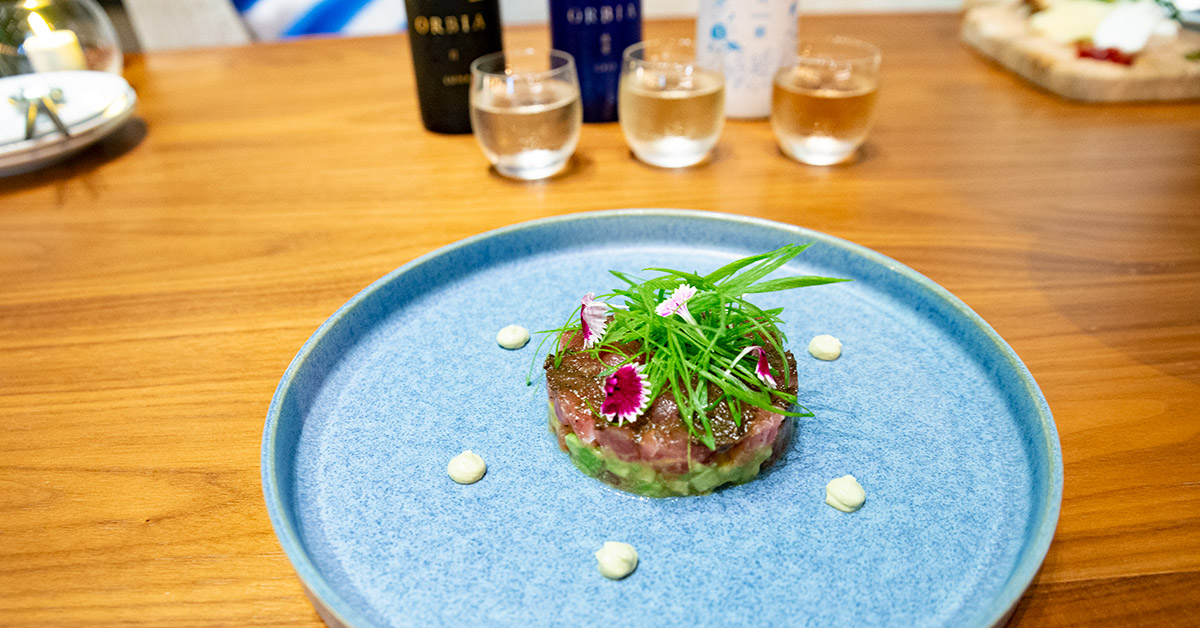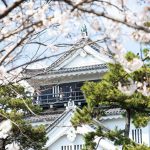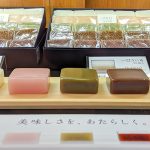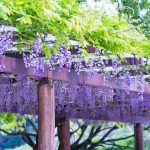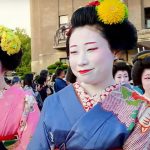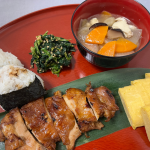It’s going to get Meshi! Nagoya’s food culture is known as “Nagoya Meshi,” which literally translates to “Nagoya Food.” And one reason Nagoya is not boring is that it’s home to some of the best foods in Japan.
We have to admit, there is great regional food in many parts of Japan, such as the delicious Shikoku Udon, unbelievably scrumptious Okonomiyaki from both Hiroshima and Osaka, and the tasty local ramen from Kyushu and Hokkaido.
However, Nagoya has a wide variety of great regional dishes too! Spicy, meaty, fried, and even sweet, Nagoya has it all.
So what are all of these amazing foods? Let’s get into it. This post is a list of 19 Nagoya Meshi dishes, as well as our best recommendation(s) on where to eat them. Fair warning though, you might want to grab a few snacks before reading. We had to raid the fridge a couple of times while writing this post. (Note, there are many “official” lists of Nagoya Meshi, and what dishes are included depend on your source. This is our version!)
Article Contents
Hitsumabushi: The Best Food in the World
OK, that may be a slight exaggeration, but Hitsumabushi really is SO good! It’s first on the list for a reason. You can’t come to Nagoya and not try this dish, and we’ll tell you why.
Hitsumabushi is made from Japanese freshwater eel which is grilled over charcoal, dipped in a sweet soy sauce glaze, and then served atop white rice. What makes this meal so unique is the process with which people eat it. It’s kind of like four dishes in one. Each “course” is eaten slightly differently, which gives you a whole new experience in every bite!
For the first “course,” you first enjoy the dish as it was served: just the eel, sauce and rice. The eel melts delightfully in your mouth, and the sauce is sweet, salty and perfectly balanced by the fresh warm rice. Mmmm.
For the second serving, you’ll add condiments such as wasabi, green onions, and Sansho (a kind of Japanese pepper). By doing so, the flavor of the dish changes completely!
Next, you’ll add some condiments as well as a broth to transform the dish into a kind of soupy risotto known as Ochazuke. This will be a completely different experience from the two prior servings!
Lastly, enjoy the rest of your Hitsumabushi however you liked it best. (I personally love it with the condiments, but this is your chance to eat the rest of it however you want!)
Hitsumabushi in Nagoya is a real delicacy, so it doesn’t come cheap. A normal serving costs between 3,000 and 6,000 yen (depending on the restaurant) but some places serve a mini size around 2,000 yen.
Want to try Hitsumabushi? Learn even more and find and a list of our recommended restaurants here. You can also try Hitsumabushi (as well as some of the other dishes listed here) on our Specialties of Nagoya Food Tour.
Miso Nikomi Udon with Hatcho Miso
Sightseeing in Nagoya in the chilly fall and winter can be magical. It can also be quite cold, and after a couple of hours outside, you will be longing for a cozy restaurant and some hot food. What you are craving is Miso Nikomi Udon, you just don’t know it yet.
Miso Nikomi Udon (meaning, udon stewed in miso) is a noodle dish featuring a piping hot miso-based soup made with Hatcho Miso. The dish is topped with kamaboko (steamed fish cake), leek, and a raw egg that cooks in the hot soup. Other variations include chicken, beef, mushrooms, and even deep-fried shrimp.
If you are vegetarian or vegan, Yamamotoya Okute (only this one restaurant) has developed a vegan Miso Nikomi Udon version, using vegetable broth. They also have a halal version of the dish!
Would you rather learn to cook Miso Nikomi Udon yourself? Check out one of our cooking classes, taught by Nagoya locals! Click the banner to learn how to cook vegan Tenmusu, Miso Katsu and more! Or click here for the traditional, non-vegan class.
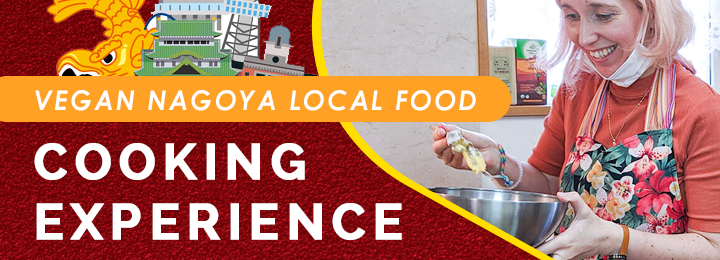
Miso Katsu: Tasty Fried Pork Cutlets

We mentioned Hatcho Miso in the section above. Hatcho Miso is actually a local specialty used in many dishes in Aichi Prefecture, of which Nagoya is the capital city.
Miso is fermented soybean paste that is a staple ingredient in Japanese cuisine. There are several varieties, each with their own flavor and uses. The people of Nagoya love the taste of red miso specifically, and it is a popular stereotype that the Nagoya locals put miso on everything (kind of true). In fact, several of the foods on this list feature red miso as a signature ingredient. If you want to know some more information on this special miso paste, check out our article on Hatcho Miso, a particular type of red miso produced in the nearby city of Okazaki.
For now, let’s focus on Nagoya’s Miso Katsu. Miso Katsu is a deep-fried pork cutlet smothered in miso sauce, served with cabbage, rice, and a miso soup (more miso, really?) and a splodge of Japanese mustard. This dish is popular especially as a lunch option at little family-run restaurants.
The most famous restaurant for Miso Katsu in Nagoya, however, is Misokatsu Yabaton. Easily recognizable because of its mascot, which is a pig in a red sumo belt. If you try Miso Katsu for the first time, we recommend ordering a half-and-half portion of Nagoya’s miso sauce and tonkatsu sauce (this is what the rest of Japan puts on their katsu).
Miso Katsu is also served as a popular Nagoya street food in the form of Miso Kushi Katsu (Miso Katsu on a stick). You can find it at the Osu shopping streets (one of the most popular attractions in Nagoya) and at Dote Ni (see below) and Kushi Katsu restaurants.
Misokatsu Yabaton Yabacho Main Shop (矢場とん 矢場町本店)
Opening Hours: 11:00 – 21:00
Address: 3-6-18 Osu, Naka Ward, Nagoya, Aichi 460-0011
Website | Google Maps
Want to learn more about miso, and maybe a little about samurai culture as well? Check out our tour of nearby Okazaki to learn (and taste) more! Click the banner below for details.
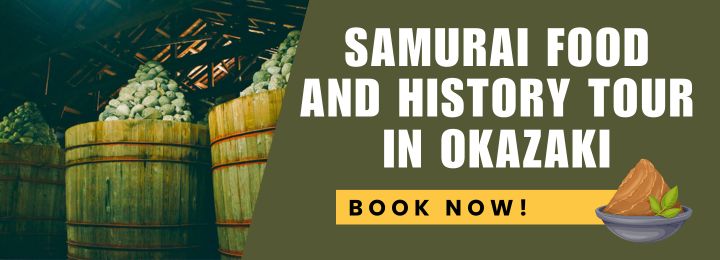
Miso Oden, Warm Winter Stew

As we previously said, miso is a featured ingredient in a lot of Nagoya dishes, and oden is no exception. Oden is a very popular winter food in Japan, and you can find it everywhere once the weather gets cold. Oden is made of variety of ingredients (eggs, Daikon radish, fish cakes) that are typically boiled in a soy sauce-based broth. Once you see the convenience stores setting up their oden pans, it’s a sign that winter has officially arrived.
In Nagoya, of course there is a miso version! Actually, two miso versions. The first is where miso is used to make the broth itself, and the second where miso is used as a topping. It’s even common to find tubes of miso next to the oden, making it much easier for Nagoyans to get their miso fix.
One of the most accessible places for tourists to try oden made with miso broth is Mukashi no Yabaton in Osu. This shop is a nostalgic reimagining of the post-war era when Nagoya’s izakaya (Japanese bars) served oden and Miso Katsu with lots of beer!
Mukashi no Yabaton (昔の矢場とん)
Opening Hours: 11:00 – 21:00
Address: 2 Chome-21-32 Osu, Naka Ward, Nagoya, Aichi 460-0011
Website | Google Maps
Dote-Ni, for the Brave

This is a dish for adventurous eaters, as the ingredients might be offputting for some. Here’s our best attempt to convince you to try it! “Dote-ni is a delectable local dish made with lesser-used cuts of pork and beef mixed with flavorful red miso to create a unique taste and texture, different to anything you have eaten before”. That sounds pretty good, right?
Translation? Dote-ni is pork and beef entrails boiled in red miso sauce. Yum?
We admit that it’s a hard sell, but it’s included on the list of Nagoya Meshi for a reason. It’s a very well-known dish in Nagoya and a local favorite! If you’re looking for a new food experience, we highly recommend it. Put aside the word “entrails” and dig in!
If we’ve successfully persuaded you, we recommend a visit to Gomitori Honten. You can also find plenty of (less offensive) local dishes here, too.
Gomitori Honten (伍味酉本店)
Opening Hours: 5:00 – 17:00
Address: 3-9-13 Sakae, Naka Ward, Nagoya 460-0008
Website (Japanese only) | Google Maps
Ankake Spaghetti (Nagoya’s “Pasta”)
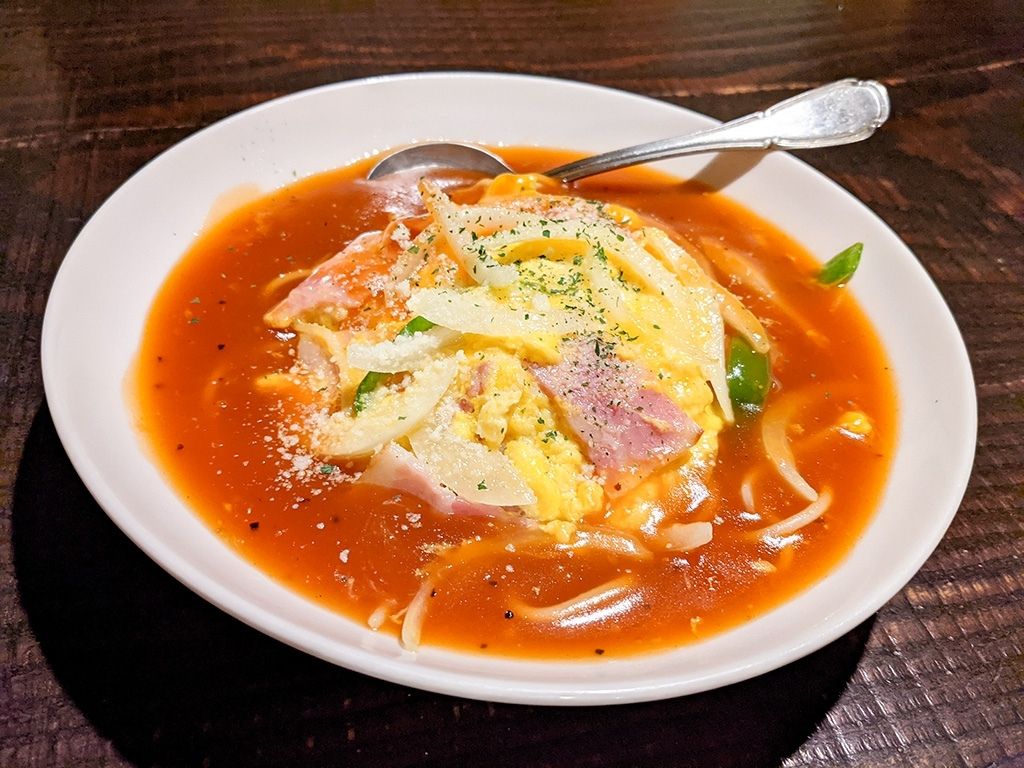
This isn’t your mom’s spaghetti. Ankake Spaghetti is made with ultra-thick spaghetti noodles in a sticky, peppery, vegetable-y sauce. One variation is topped with vegetables and referred to as “Kantori,” from the word “country.” You will also find “Miraneze,” topped with sausages (from the the Italian word “Milanese.”) If you want vegetables and sausage, you can order mirakan. Get it? mira-neze, kan–tori, mira-kan… The Japanese really love their portmanteaus! You might also find toppings like cheese, egg, or different kinds of meat and fish.
Legend says, Ankake Spaghetti was created when a Japanese chef tried to adapt an Italian meat sauce recipe for the Japanese palette. The result had nothing to do with meat sauce, but the locals seemed to like it, and that was all that mattered. Multiple restaurants in Nagoya actually claim to be the original creator of the dish, so the exact origin isn’t precisely know. But what is undisputed is that it was born in Nagoya and is a true Nagoya Meshi.
Ankake Spaghetti is the perfect dish for anyone with a big appetite. While the normal serving size of spaghetti (around 200 grams) is just right for most people, you can get a huge serving of 500 grams for an extra 100 yen at many restaurants in Nagoya.
The most famous Ankake Spaghetti restaurants are Spaghetti House Sole, Spaghetti House Ciao, and Spaghetti House Yokoi. These are also are some of the best restaurants in Nagoya if you are looking for a big meal, but don’t want to spend a lot of money.
We recommend Ankake Taro if you are super hungry. Here you can get servings of up to 1 kilogram of pasta! Find some more restaurants and information on Ankake Spaghetti here.
Anake Taro (あんかけ太郎 名古屋城金シャチ横丁店)
Opening Hours: 11:00 – 15:30 and 17:30 – 21:00
Address: 1-3 Ninomaru, Naka Ward, Nagoya, Aichi 460-0032
Website (Japanese only) | Google Maps
Nagoya’s Teppan Napolitan Italian

Ankake Spaghetti isn’t the only pasta dish that’s considered Nagoya Meshi! It’s got some competition in the form of Teppan Napolitan, a spaghetti dish served on a piping hot plate called a teppan zara that’ll keep your pasta piping hot from start to finish. Typical toppings include paprika, onions, sausages, mushrooms and peas, with a beaten egg poured on top.
Teppan Napolitan was originally found only in coffee shops, but has since become extremely popular in restaurants all over the city, which is why it is included in the ranks of Nagoya Meshi.
Of the many shops that claim to be the inventor of Teppan Napolitan, a notable one is Cafe Yuki. Their secret for a delicious Napolitan? Ketchup, ketchup, and when you think you added enough, add a little bit more ketchup! Italians will be horrified, sure. But it’s seriously good. Don’t knock it til you try it!
Cafe Yuki (喫茶 ユキ)
Opening Hours: 10:00 – 15:00, Closed Friday and Saturday
Address: 3-2-30 Aoi, Higashi-ku, Aichi 461-0004
Google Maps
Moriguchi-zuke: the World’s Longest Pickle

Moriguchi-zuke (literally, Moriguchi pickle) is a pickle made from Moriguchi Daikon radish instead of the cucumbers you’re probably used to. Moriguchi-zuke is made using a traditional process developed over 100 years ago. It’s pickled with sake or mirin (a sweet sake used in cooking). You might be surprised to learn that it takes over three years for a batch of these tasty pickles to be ready to eat! Though it has a rather strange appearance, we promise it tastes much better than it looks! Because this pickle takes a long time to make, it is typically more expensive than your average pickle and is regarded as a delicacy. For that reason, they are commonly given as gifts by Nagoya locals.
If you’re curious about Moriguchi-zuke, take a look at our Specialties of Nagoya Food Tour! During this tour, you will come across Moriguchi-zuke and other artisan delicacies as part of the tour.
Yamatoya Moriguchizuke Souhonke (大和屋守口漬総本家)
Opening Hours: 9:00 a.m. – 8:30 p.m.
Address: 6-9 ESCA Underground Shopping Street, Tsubakicho, Nakamura Ward, Nagoya 453-0015
Website (Japanese only) | Google Maps
Kishimen: Nagoya’s Flat Noodles
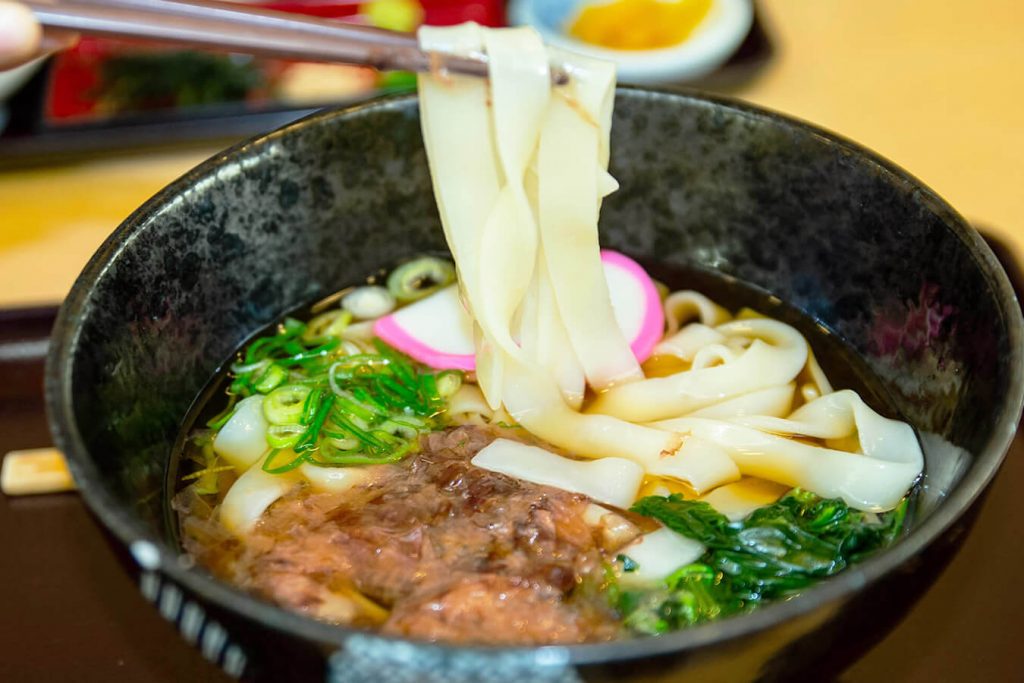
Kishimen is a special kind of udon noodle that’s local to Aichi Prefecture, so if course it makes the Nagoya Meshi list. Instead of the round or square shape of typical udon, kishimen noodles are flat and broad. This gives the noodles a different consistency and a different eating experience.
Kishimen is typically served hot in a broth made of Dashi, but you can find many variations as noodle soups as well as chilled noodle dishes.
One of the best restaurants to try kishimen is at Miya Kishimen on the grounds of Atsuta Jingu. Atsuta Jingu is one of the most important Shinto shrines in Japan, and a popular tourist attraction in Nagoya. This restaurant has a long tradition of making delicious kishimen, and a completely renovated shop just opened in 2021.
Miya Kishimen Jingu Shop (宮きしめん 神宮店)
Opening Hours: 9:00 – 16:30
Address: Jingu 1-1-1, Atsuta Ward, Nagoya 456-8585
Website (Japanese only) | Google Maps
Curious about kishimen? Join us for our Nagoya Castle Day Tour, where we stop at a local shop famous for these special flat noodles!
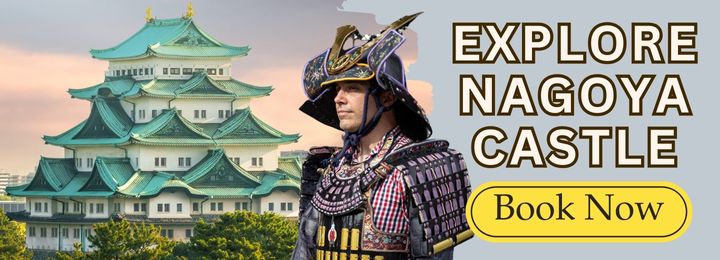
Taiwan Ramen: Hot and Spicy!
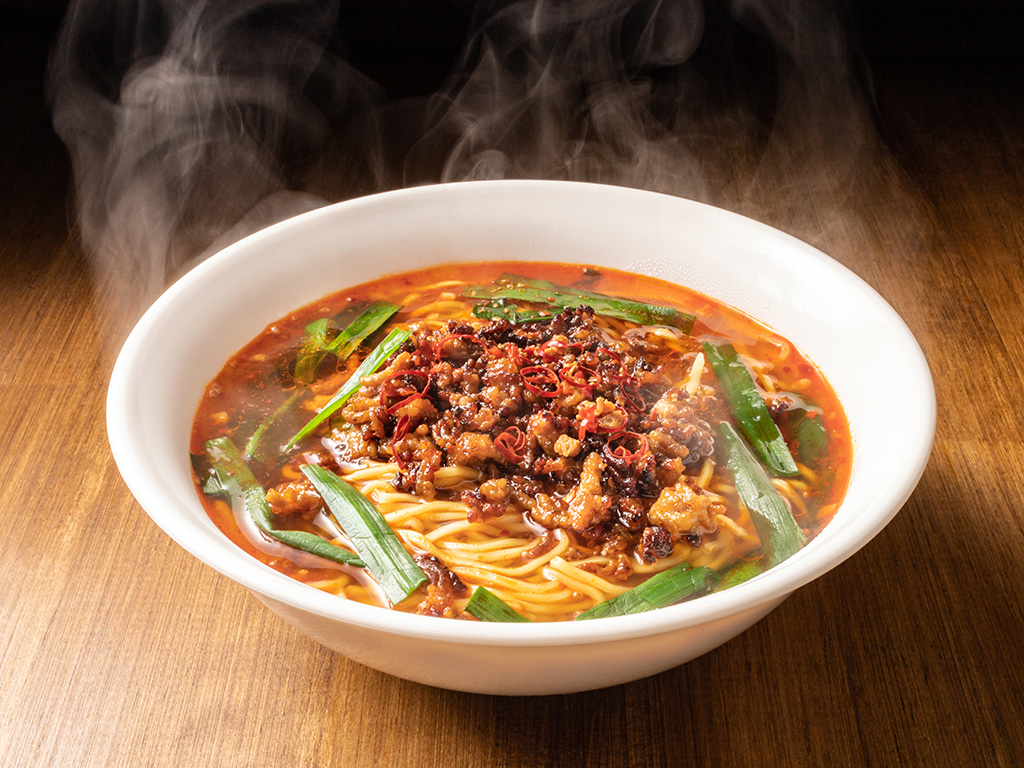
Misen is a Taiwanese restaurant that started in Nagoya. Misen sells Taiwanese dishes like spicy chicken wings, fried vegetables, fish and meat dishes, but their biggest hit is Taiwan Ramen.
The dish was created when the cook was searching for a simple yet delicious dish to serve his staff. What he came up with was a spicy chicken and soy sauce broth topped with minced meat and leek. The noodle dish was so popular, that it eventually made its way on their menu… and eventually, menus of ramen and Chinese restaurants all over Nagoya!
Taiwan Ramen is unique because is it very spicy, and the majority of Japanese cuisine tends to be quite mild. If you think you can handle the heat, make sure not to miss Taiwan Ramen on your visit to Nagoya. If you’ve never tried it before, we recommend a visit to Misen for the original taste. Some people even claim it’s the best ramen in Nagoya… but we’ll let you be the judge of that!
Misen Imaike Main Shop (味仙 今池本店)
Opening Hours: 17:00 – 1:00am
Address: 1-12-10 Imaike, Chikusa Ward, Nagoya, Aichi 464-0850
Website (Japanese only) | Google Maps
Nagoya’s Deep-Fried Shrimp: Ebi Fry
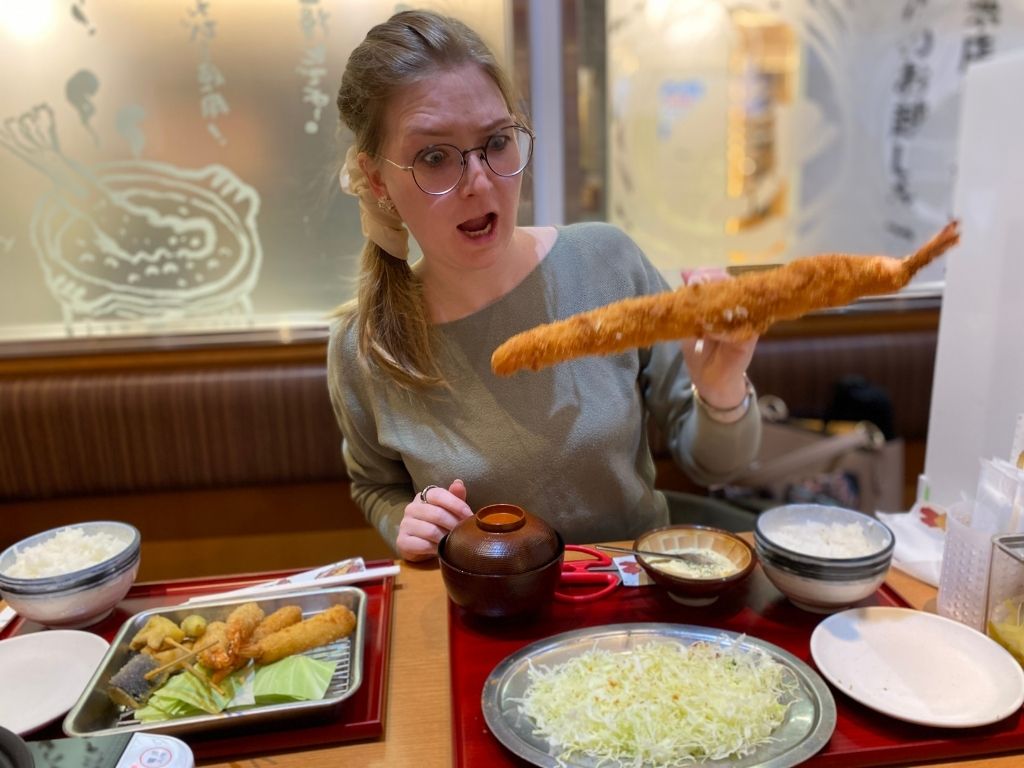
Aichi and Mie Prefectures lie on either side of the Ise Bay, out of which fishermen pull tons and tons of shrimp and prawns each year. It is no wonder that the official fish of Aichi is the prawn, since Aichi has one of the highest per-capita consumption rates in the country! Aichi is also known for the shrimp rice crackers known as Ebi Senbei, which you can find in hundreds of family-run businesses in the prefecture.
Another favorite dish using prawns is Ebi Fry, also sometimes spelled Ebi Furai (or エビフライ in Japanese). Ebi Fry is exactly what you think it is: deep-fried shrimp! While you can find fried shrimp all over Japan, it’s a great idea to try some at one of the restaurants that specialize in the dish.
Maruha Shokudo serves some excellent and enormous fried prawns. The restaurant specializes in seafood, but their Ebi Fry are their most popular menu item by far.
Another restaurant we recommend for every lover of shrimp and prawns is Ebidote Shokudo, which is one of the best restaurants in Nagoya Station. This restaurant specializes in all things shrimp, and offers a wide selection of dishes featuring shrimp and prawns. This is also the place where you can try the world’s largest deep-fried shrimp (allegedly) at around 35 centimeters long. (That’s over a foot long!) Figuring how to eat the massive shrimp is an experience we highly recommend.
For more Ebi Fry recommendations, check out our dedicated post about it.
Ebidote Shokudo (海老どて食堂)
Opening Hours: 11:00 – 22:00
Address: Esca Underground Shopping Street, 6-9 Tsubakicho, Nakamura Ward, Nagoya, Aichi 453-0015
Website (Japanese only) | Google Maps
Tenmusu, aka Shrimp Onigiri
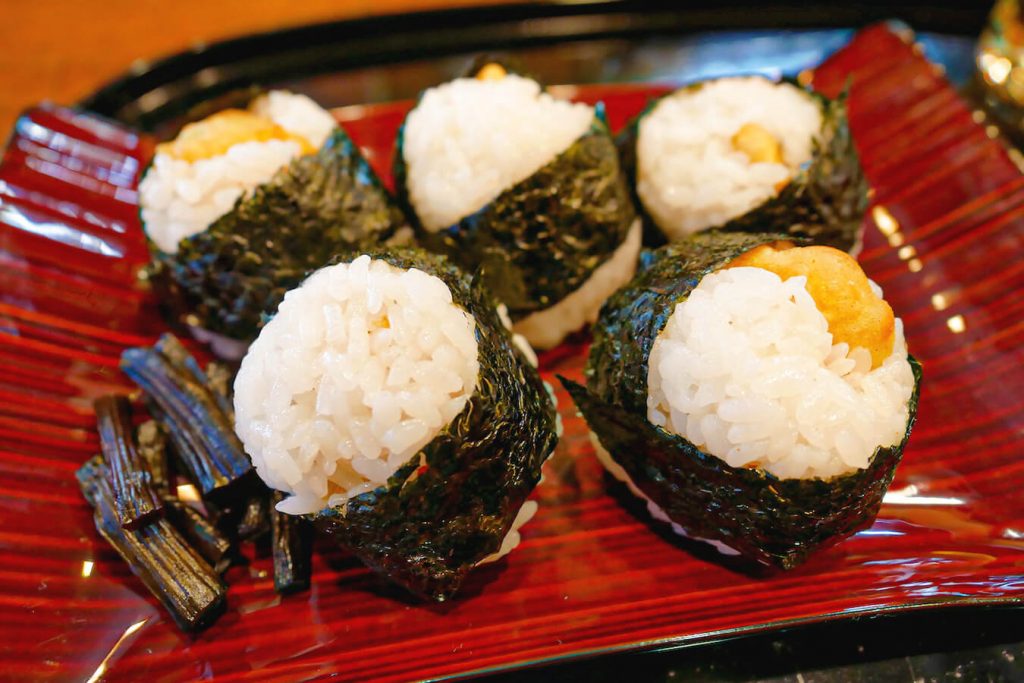
Staying with shrimp for a bit longer, let us tell you about Tenmusu, a mini rice ball filled with shrimp tempura and wrapped in nori seaweed. Technically, this dish was invented at a tempura shop in Tsu city in Mie Prefecture, but reached Nagoya by way of a franchise. However, it came to be strongly associated with Nagoya because the owners in Nagoya were very business savvy and invited radio, TV, and celebrities to endorse the food, and it exploded in popularity.
We recommend trying the original Tenmusu at Tenmusu Senju. This tiny shop sells only Tenmusu (5 rice balls per order) mostly for takeout. (Pro tip: these are best enjoyed while they are still hot and fresh!)
Additionally, Tenmusu from Tenmusu Senju is one of the foods you will get to try on our Street Food Walking Tour of Osu!
Tenmusu Senju (天むす 千寿)
Opening Hours: 8:30 – 18:00; closed Tuesdays and Wednesdays
Address: 4-10-82 Osu, Naka Ward, Nagoya, Aichi 460-0011
Website (Japanese only) | Google Maps
Tebasaki Chicken Wings
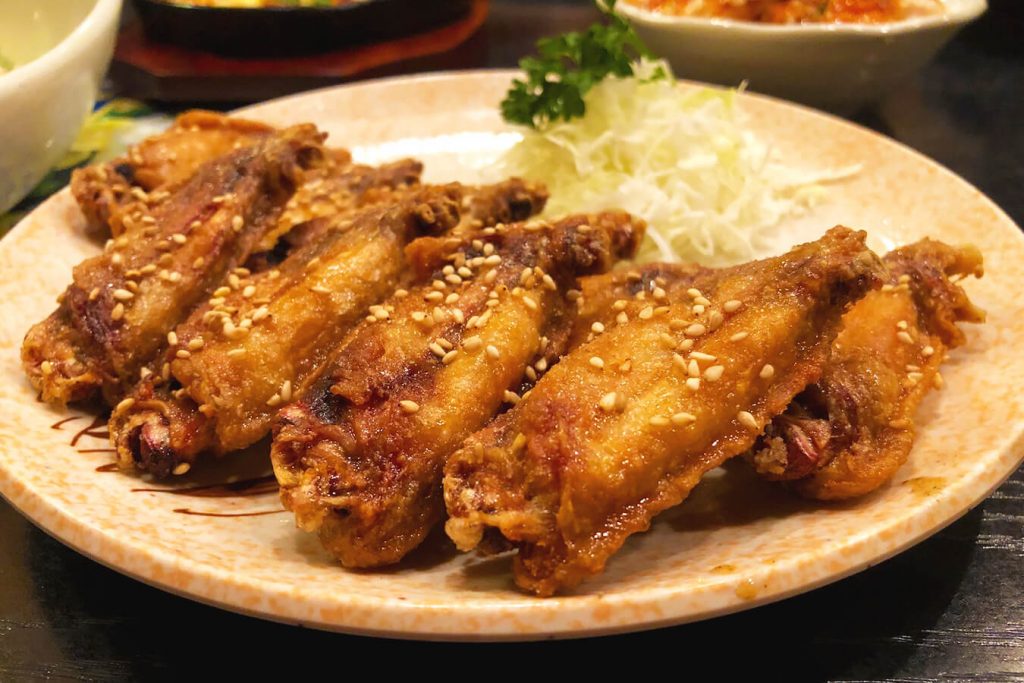
Believe it or not, there was a time when the people in Japan frequently threw away chicken wings because no one wanted to eat them. (GASP) Really though, that’s only because no one had figured out a delicious way to prepare them.
That was until one day in the early 80’s a guy called Yamachan decided to season them liberally with pepper and deep-fry them. The resulting dish was so insanely delicious and paired so perfectly with alcohol that it became an instant sensation! In fact, it was so popular that Sekai no Yamachan is now one of the most widely known izakaya chain restaurants with locations all over Japan and Asia.
Nowadays, most izakaya serve their own version of Tebasaki, but it’s Nagoya origins make it one of the most famous Nagoya Meshi on the list. You really can’t come to Nagoya and not get Tebaski at least once!
We recommend a visit to Sekai no Yamachan, though you really can find Tebasaki just about anywhere. Find out more popular places to try it by reading our article on this delicacy here.
Sekai no Yamachan Main Shop (世界の山ちゃん 本店)
Opening Hours: Monday – Friday 16:00 – 23:15, Weekends 15:00 – 00:15 (Hours vary by location)
Address: 4-9-6 Sakae, Naka Ward, Nagoya, Aichi 460-0008
Website | Google Maps
If you’re looking to try Tebasaki, don’t miss our Specialties of Nagoya Food Tour! You’ll try Tebasaki, Hitsumabushi and many other Nagoya delicacies!
Nagoya Cochin Chicken
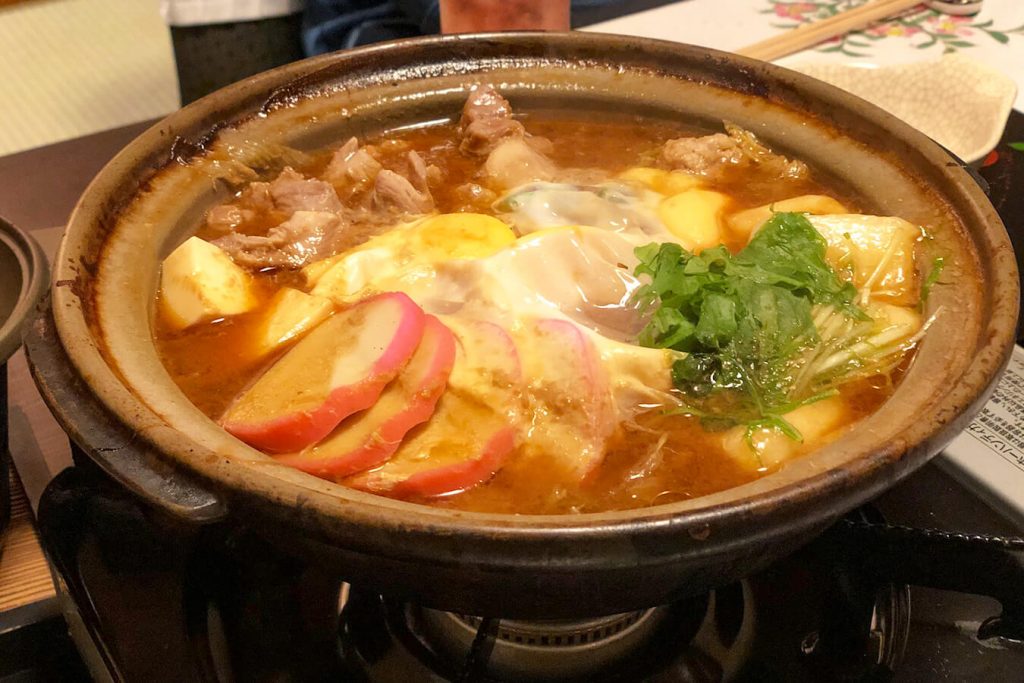
While we are on the topic of chicken, let’s talk about Nagoya Cochin, a breed of chicken local to Nagoya that originated some 160 years ago. It was created by crossing a Chinese Cochin chicken with a local chicken breed, which yielded a large chicken with pinkish meat, great texture and a lot of umami flavor. The eggs are also superior.
You won’t try Nagoya Cochin by accident though. This chicken is more expensive than normal chicken, and is usually found at restaurants specialized in Nagoya Cochin, such as Torigin. This is also the restaurant said to have popularized the chicken breed in the first place. Their Miso Nabe is truly divine, combining the local chicken with the popular red miso found in the region. It’s a true Nagoya must-try dish!
Torigin Main Shop (鳥銀 本店)
Opening Hours: 17:00 – 00:00
Address: 3-14-22 Nishiki, Naka Ward, Nagoya, Aichi 460-0003
Website (Japanese only) | Google Maps
Nagoya’s Morning Set
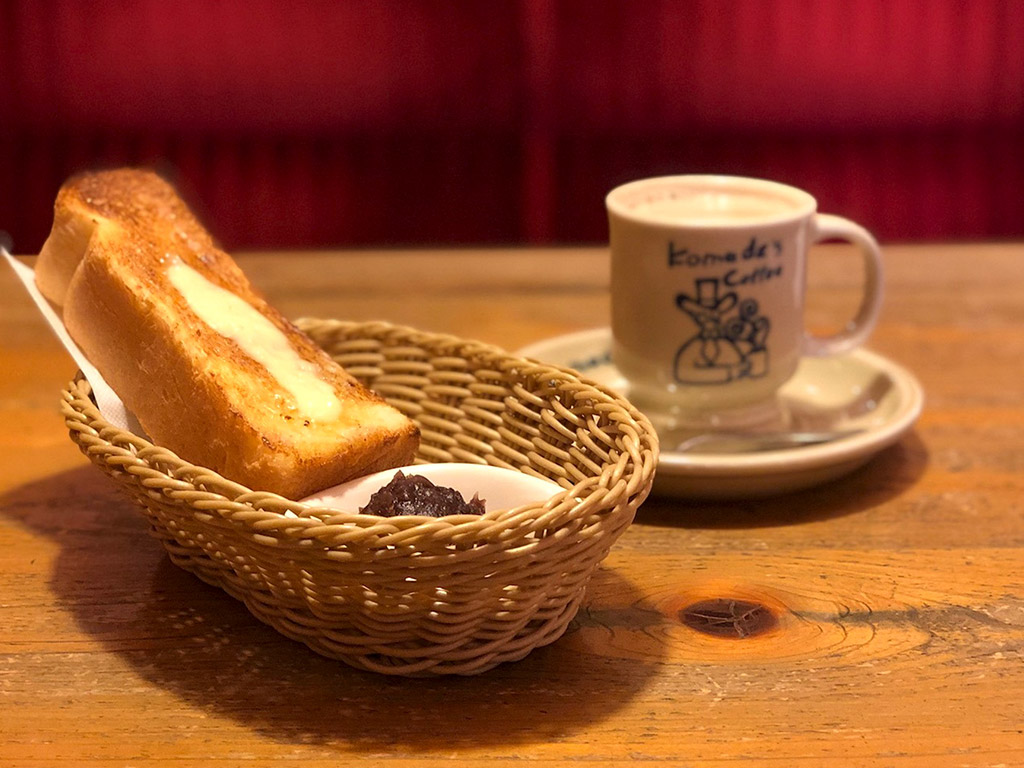
Were you looking for breakfast? Sorry you had to scroll so far down the page! Here comes the most popular option for breakfast in Nagoya, and it’s completely free.
Nagoya Morning or Nagoya Morning Service refers to a practice found in almost every coffee shop and cafe in Nagoya where you get a free breakfast with your order of morning coffee (or tea).
This breakfast usually consists of a slice of toast and a boiled egg, but can be other things as well. Salad, soup, different spreads of toast, for example. Nagoya Morning is a great deal if you are looking for a light breakfast with your morning cup of coffee.
For the best coffee in Nagoya, we recommend you visit Komeda’s Coffee, a coffee shop chain that originated in Nagoya. For your Nagoya Morning Service, you can choose between toast with a boiled egg, toast with egg spread or Ogura toast, toast with sweet red bean paste.
Komeda’s Coffee is seemingly on every corner in Nagoya, so you shouldn’t have a problem finding one close to your hotel or station. Make sure to read our article on Nagoya Morning Service here.
Ogura Toast: Sweet Beans and Butter
While we are talking about Ogura toast, let us explain what exactly it is and why you need to try it.
Ogura toast is a thick slice of toast slathered with margarine or butter and topped with a sweet red bean paste called anko. Sometimes it also comes with whipped cream. Don’t knock it till you’ve tried it! Red bean paste is best compared to jam, and is a very popular ingredient in all kinds of Japanese sweets such as Manju and Taiyaki.
Ogura toast is a Nagoya invention and an essential breakfast in Nagoya. Although the original shop that invented it doesn’t exist anymore, you can find it at most coffee shops around the city including the aforementioned Komeda’s Coffee.
Oni Manju, a Devilishly Good Dessert
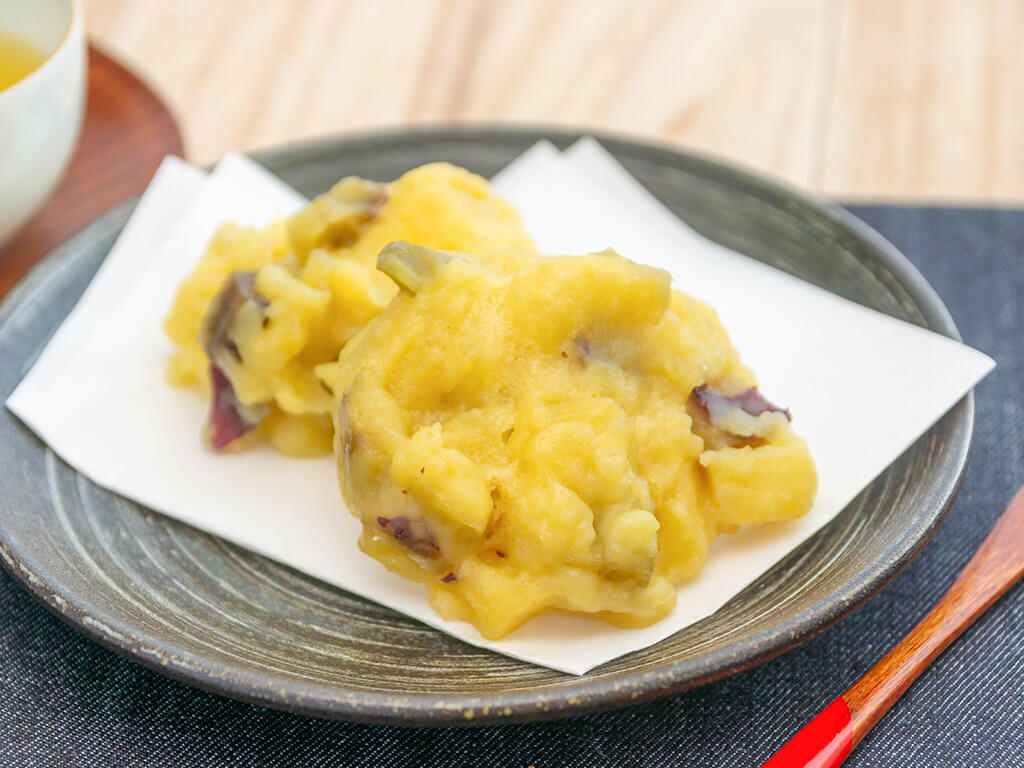
Oni Manju is a yellow sweet made with sweet potato that’s a popular snack in Nagoya. Oni Manju translates to “Devil Rice Cake.” But why would they name such a sweet-sounding snack after the devil?
Well, it’s not the devil, of course. Oni are Japanese demons or devils in human form with red skin, horns, big teeth, and usually carrying spiked clubs. The theory says the spiked clubs and horns remind people of the sweet potato lumps on the uneven surface of the Oni Manju.
Be that as it may, Oni Manju is a delicious local sweet and a true Nagoya Meshi. Even though most locals aren’t aware of this, Oni Manju is generally only found in the area around Nagoya. Oni Manju used to be made mainly at home, but nowadays they can be found at confectionaries as well as most supermarkets and department stores.
Uiro, Nagoya’s Jelly Cubes
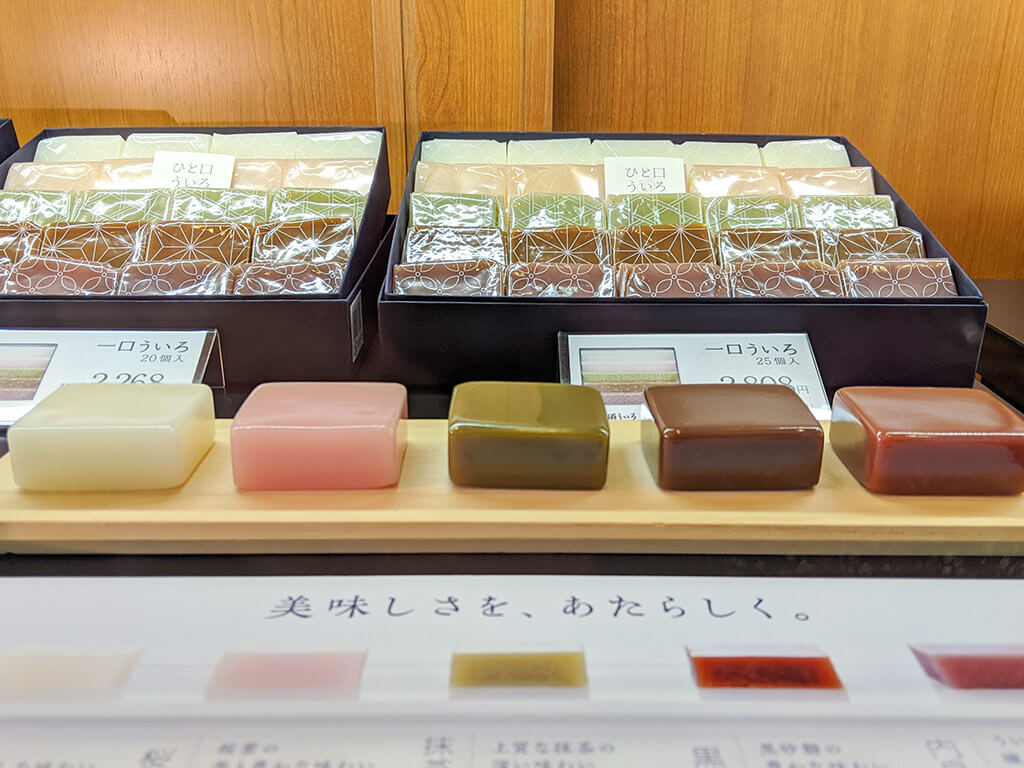
Uiro is quite different from other Nagoya specialties. It can be found all over Japan! This confectionery is made from steam, rice flour, and sugar, commonly flavored with with things like brown sugar, green tea, red bean or yuzu, a citrus fruit commonly grown in Japan.
A large portion of Japanese Uiro is produced in Aichi, which makes it a true Nagoya specialty. It is a very popular souvenir to bring home to friends and family after a visit to Nagoya, and can be found at department and souvenir shops all around the city.
Uiro is also one of the foods you’ll try on out Walking Tour of Osu, along with several other Nagoya Meshi. Click the link or banner for more!
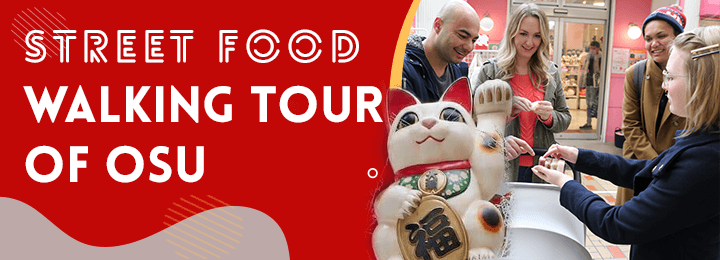
Ebi Senbei, Tasty Shrimp Crackers
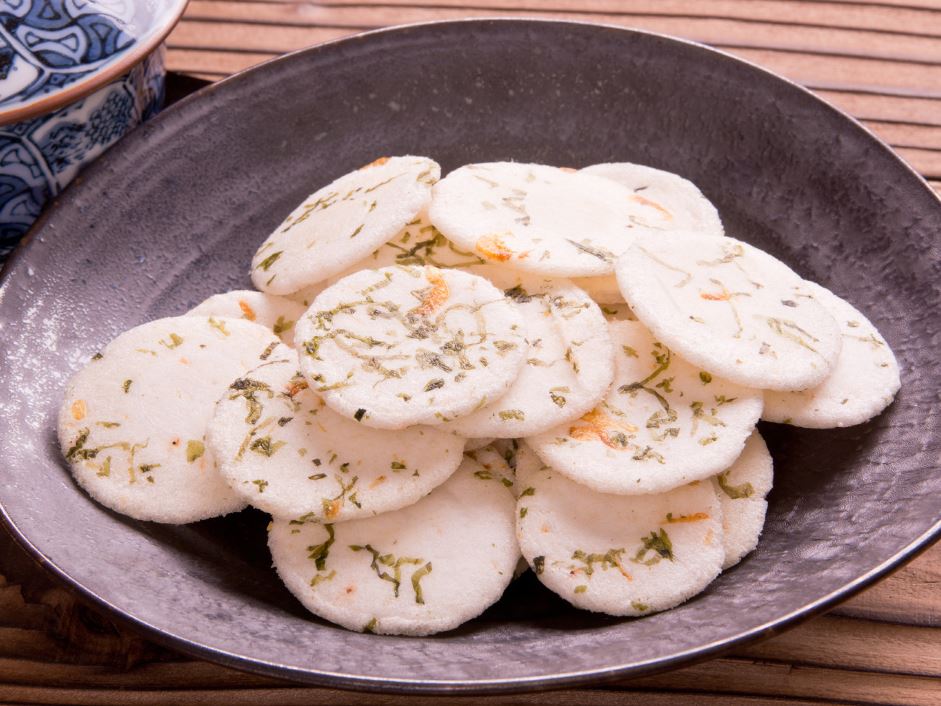
Ebi senbei, or shrimp rice crackers, are a beloved snack from Nagoya. These thin, crispy crackers are made by blending rice flour with fresh shrimp, resulting in a savory treat that bursts with umami flavor. Often grilled or baked to achieve their signature crunch, ebi senbei highlight the region’s affinity for seafood and simple yet bold flavors. They are a perfect example of Nagoya’s culinary ingenuity, transforming humble ingredients into distinctive delicacies that are both satisfying and deeply rooted in local traditions. Whether enjoyed as a snack or a gift, ebi senbei are a must-try for anyone exploring Nagoya’s food culture.
Ebi senbei can be purchased just about anywhere in Nagoya, and it is also common to find whole shops dedicated to different flavors of ebi senbei! They can also be sampled during our Specialties of Nagoya Tour.
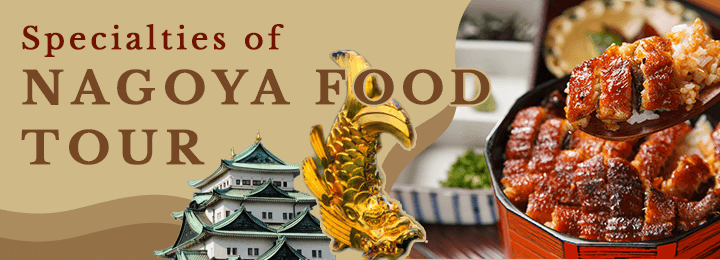
Have you realized that the food in Nagoya isn’t boring at all? With a lot of variety, from savory to sweet, hot and cold, meat, noodles, and everything else in between. In this post, we have introduced you to the best places to eat in Nagoya. But if you don’t want to explore the best of Nagoya on your own, book a Specialties of Nagoya Food Tour and try a great selection of Nagoya’s famous food.
Did you enjoy this article?
Then you might also enjoy this post: Things to do in Nagoya
Or check out all of our blog posts here.
Be sure to follow us on Facebook for new articles every week, and see our Instagram for pictures and stories about Nagoya!
Share your comments below or message us using any of our SNS or send us an email.
Tag us
Share your favorite Nagoya Meshi on social media and make sure to tag us on with #nagoyaisnotboring you might even be featured on our social media account!

